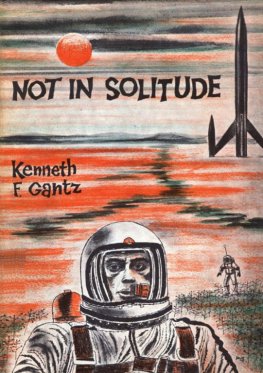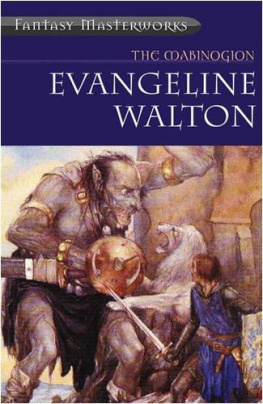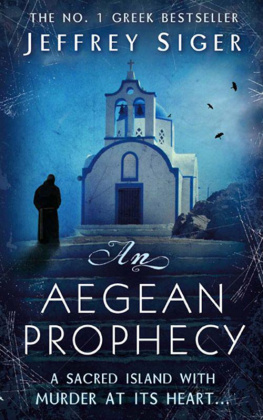Jeffrey Gantz - The Mabinogion
Here you can read online Jeffrey Gantz - The Mabinogion full text of the book (entire story) in english for free. Download pdf and epub, get meaning, cover and reviews about this ebook. year: 2018, publisher: Penguin Books Ltd, genre: Detective and thriller. Description of the work, (preface) as well as reviews are available. Best literature library LitArk.com created for fans of good reading and offers a wide selection of genres:
Romance novel
Science fiction
Adventure
Detective
Science
History
Home and family
Prose
Art
Politics
Computer
Non-fiction
Religion
Business
Children
Humor
Choose a favorite category and find really read worthwhile books. Enjoy immersion in the world of imagination, feel the emotions of the characters or learn something new for yourself, make an fascinating discovery.

- Book:The Mabinogion
- Author:
- Publisher:Penguin Books Ltd
- Genre:
- Year:2018
- Rating:4 / 5
- Favourites:Add to favourites
- Your mark:
- 80
- 1
- 2
- 3
- 4
- 5
The Mabinogion: summary, description and annotation
We offer to read an annotation, description, summary or preface (depends on what the author of the book "The Mabinogion" wrote himself). If you haven't found the necessary information about the book — write in the comments, we will try to find it.
The Mabinogion — read online for free the complete book (whole text) full work
Below is the text of the book, divided by pages. System saving the place of the last page read, allows you to conveniently read the book "The Mabinogion" online for free, without having to search again every time where you left off. Put a bookmark, and you can go to the page where you finished reading at any time.
Font size:
Interval:
Bookmark:


UK | USA | Canada | Ireland | Australia
India | New Zealand | South Africa
Penguin Books is part of the Penguin Random House group of companies whose addresses can be found at global.penguinrandomhouse.com.

This edition first published 1976
Translation copyright Jeffrey Gantz, 1976
All rights reserved
ISBN: 978-0-141-92046-7

discover more stories like this at Penguin.co.uk
 CLASSICS
CLASSICSTHE MABINOGION has come to be accepted as a composite title for eleven medieval Welsh prose tales, the result of centuries of oral storytelling. Although influenced by the growth and development of the Arthurian legend on the Continent, these tales are essentially native in origin, and despite circumstances unfavourable to transmission, they preserve much of the colour and energy of the early Celtic world.
JEFFREY GANTZ received a doctorial degree in Celtic Languages and Literatures from Harvard University in 1972. He lives in Cambridge, Massachusetts, where he works as a newspaper editor and journalist. He has also translated Early Irish Myths and Sagas for Penguin Classics.
To my family
On the bank of the river he saw a tall tree: from roots to crown one half was aflame and the other green with leaves.
Peredur (p. 243)
Of all the strange and supernatural images in The Mabinogion, none captures the essence of these medieval Welsh tales so concisely as does this vertically halved tree: the green leaves symbolizing the rich and concrete beauty of the mortal world, the flames symbolizing the flickering shadowy uncertainty of the otherworld, and the whole emblematic of the tension and mystery which characterize all forms of Celtic art.
The Mabinogion itself is something of a mystery, both as to origin and as to content. Some clarification is, however, feasible:
1. The title Mabinogion, while familiar and convenient, actually grew up round a nineteenth-century misconception (see Section 7, ). Tales from the White Book of Rhydderch (one of the manuscripts in which the stories appear) would better describe these eleven distinct and largely unrelated narratives.
2. The tales of The Mabinogion are not the product of a single hand, even individually. On the contrary, they evolved over a span of centuries: passed on from storyteller to storyteller, they were by turns expanded and distorted, improved and misunderstood. It follows that the versions we possess are not the most original, and not necessarily the most coherent.
3. While we in fact possess only one version of each tale, it is quite possible that other, substantially different, versions also existed at one time.
4. Our manuscripts by no means commemorate the first occasion on which these stories were committed to paper. While the White Book of Rhydderch (our earliest more-or-less complete manuscript) dates to c. 1325, the tales of The Mabinogion appear to have existed in written form for a considerable period before that. In all likelihood, the copyists, through ignorance and carelessness, introduced additional errors, a consideration which reinforces the observation made above that these tales altered appreciably in passing from one hand to the next.
5. As to content, The Mabinogion draws upon the myths, folklore, history and pseudo-history of Celtic Britain: four well-springs that are often well-nigh indistinguishable. Set largely within the British Isles, the tales nonetheless create a dreamlike atmosphere by telescoping Saxon- and Norman-dominated present into the misty Celtic past of has been and never was.
Sad to say, while a relatively large number of interrelated and well-ordered medieval Irish tales have survived, this is the only Welsh collection of the kind which we possess. As a repository of myth and history, The Mabinogion is highly corrupt, while the circumstances of its transmission all but precluded the development of those qualities commonly associated with literary excellence. Even so, these tales preserve, albeit in garbled form, much of the primitive, fantastic, fascinating world of Celtic myth, and they exemplify the heroic, romantic, idealistic world of Celtic literature. If the beginnings of The Mabinogion remain a mystery, its continued appeal does not.
The tales themselves comprise an ensemble of rather heterogeneous parts. The text identifies the first four Pwyll, Branwen, Manawydan and Math as the Four Branches of the Mabinogi: composed largely of mythological fragments, and unified by a network of thematic parallels and a consistent point of view, these stories possess a structural and stylistic identity which must suggest the hand of a single redactor. How Culhwch Won Olwen incorporates a treasure trove of traditional lore (including King Arthurs first appearance in Celtic prose) within its embracing central theme of the heros quest for the giants daughter, a folktale seemingly built on a regeneration myth. The Dream of Maxen and Lludd and Llevelys relate pseudo-historical accounts of British courage and intelligence in Roman and pre-Roman days, while The Dream of Rhonabwy contrasts the splendour of the legendary Arthur (and of Celtic legends in general) with the more prosaic realities of twelfth-century Wales. Finally, Owein, Peredur and Gereint that part of The Mabinogion closest in feeling to the tales of Crestiens de Troyes and Thomas Malory use Arthurs court as backdrop and ancient themes as material for the heroic and romantic exploits of three of his champions.
The people responsible for The Mabinogion that is, the Welsh are descendants of the Celts, a distinct Indo-European linguistic and cultural group who seem to have surfaced in Bohemia during the early centuries of the last millennium before Christ. By the time of Herodotus they had established themselves north of the Alps; in 390 B.C. they sacked Rome, and in 279 Delphi. A vigorous and energetic people, the Celts were quick to expand their area of control, but having no tolerance for centralized authority, even among themselves, they were unable to consolidate their gains; after Caesars defeat of Vercingetorx at Alesia in 52 B.C. Gaul was doomed to give way to the Romans, and by A.D. 400 Gaulish culture was virtually extinct. Even so, the extent of Gaulish influence can be seen today in the Celtic names which survive for major cities like Paris, Milan and Vienna (London?, Berlin?) and major rivers like the Thames, the Seine, the Rhine and the Danube.
Font size:
Interval:
Bookmark:
Similar books «The Mabinogion»
Look at similar books to The Mabinogion. We have selected literature similar in name and meaning in the hope of providing readers with more options to find new, interesting, not yet read works.
Discussion, reviews of the book The Mabinogion and just readers' own opinions. Leave your comments, write what you think about the work, its meaning or the main characters. Specify what exactly you liked and what you didn't like, and why you think so.









